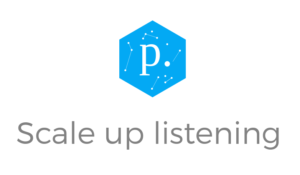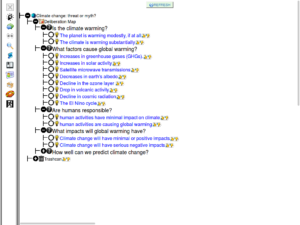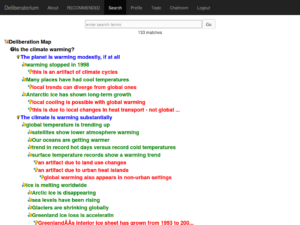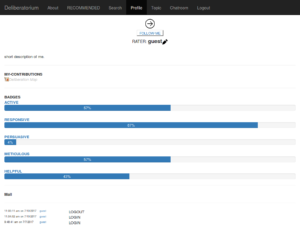The second technology we will use in our experiment is Pol.is. Pol.is takes a very different approach to the Deliberatorium, aiming to work with emotions. The Pol.is interface is extremely simple. A user can vote (agree/disagree/don’t care) on the comments of other users presented in a random order, or can add her own comment. All the votes are then displayed on a map and clustered displaying users that agree on a set of issues. The objective of this platform is to draw a “climate report” of all the points of views among the users. It shows the existing coalitions of agreement among users and the fact that these coalitions are more fluid than people might think. This is an online version of an exercise often used in face- to- face deliberation, with a clever use of a simple user interface. In the face- to face- world participants voice their ideas or concerns and move around to cluster with those issues that resonate with them. It is an extremely useful exercise for group building and to show that we might disagree on some topics, but we often agree on others. We spoke with Colin who is the CEO of Pol.is and he is enthusiastic about the experiment and is going to help us make sure that our treatment is the best reflection of their philosophy as possible. He also hopes to test crowd-moderation via our experiment. We are not sure we will be able to do that, but we will see!
Follow the link:




